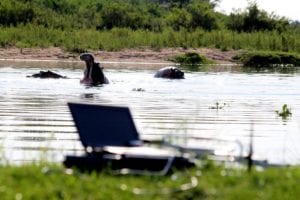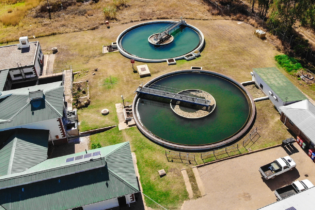Aquatic scientists and managers can now rely on a new locally-developed local biotelemetry system to understand animal behaviour in water. For the last four years the Water Research Commission (WRC) has been funding a series of studies which have led to the development of a locally produced biotelemetry system to monitor the behaviour of aquatic organisms in South Africa.
Biotelemetry involves the use of transmitting devices to monitor the behaviour and physiology of animals in their natural environment. This monitoring technique is proving to be increasingly useful to researchers around the world. Biotelemetry devices allow researchers to document, for long uninterrupted periods, how undisturbed organisms interact with each other and their environment in real time. Through collaborative efforts between the Water Research Commission , Water Research Group at North West University (WRG-NWU), the Centre for Aquatic Research at the University of Johannesburg, Scientific Services at South African National Parks, E Oppenheimer and Son and biotelemetry system specialists Wireless Wildlife International, the technology has now been successfully developed and tested in the field. Project leader Dr Gordon O’Brien, of the WRG-NWU, explains that biotelemetry methods are internationally recognised as one of the most effective ways of acquiring behavioural information of fishes and other aquatic animals over extended periods within their natural environments. “We are particularly interested in using the behaviour of these organisms to develop our understanding of their biology and ecology and then to evaluate the impact of changing environmental variables such as water quality, quantity or flows and habitat on their behaviour. This will allow us to establish management guidelines for these environmental variables which will contribute to the conservation of species.” The biotelemetry system makes use of remote and manual tracking or monitoring systems as well as smart tags or transceivers. The latter is attached to the organism being monitored. Once tagged the animals (in the case of the study fish and crocodiles) are released to re-establish their normal behavioural patterns. With remote and manual monitoring systems researchers now monitor the continuous behaviour of the animal for at least a year. The remote monitoring systems include the use of ‘listening stations’ or receivers that are deployed into the study area. These record and transmit information from the tags at a ten-minute interval to an Internet-based data management system. The researchers can log onto the data management system at any time from any computer with Internet access and download real-time behavioural data from the tagged animal. In turn, manual monitoring systems involve the use of directional antennae and hand-held receivers which are used to locate and download behavioural data from any tagged animal in the field.The type of behavioural aspects of the aquatic organisms that can be monitored include the location of the animal, the movement and activity as well as some environmental variables, including the depth of the animal in the water, as well as the temperature in the water. In addition, by monitoring the location, movement and activity of the animal over extended periods of time, the team is able to evaluate the response of the animal to changing habitat variables, flows, water quality components and weather variables, such as atmospheric pressure.
Tests have been conducted on yellowfish, tigerfish and one Nile crocodile. These animals were tagged and then released and monitored for eight months in the Crocodile River. Behavioural data, including home range, habitat use, daily and seasonal movement patterns, daily activity patterns, as well as the response of the animals to changing environmental variables were described and statistically analysed. The local biotelemetry system has proven itself to work well in the field. “This technology allows authorities to react more quickly, not only protecting our biodiversity but also affording a greater chance to apprehend polluters,” explains Bonani Madikizela, Research Manager at the WRC. This means that when the behaviour of species indicates that environmental thresholds have been reached, for example, through reduced flows or a chemical spill into a river, managers will be able to respond accordingly. “We may even be able to use fish behaviour in real time to release ecological flows at the start of migration. This will all result in a better ability of decision-makers to manage and conserve our precious ecosystems,” explains Dr O’Brien. Further developments in remote and manual biotelemetry monitoring methods and analyses techniques are continuing. It is hoped that this technology will go a long way towards the conservation of South Africa’s rich aquatic biodiversity.









